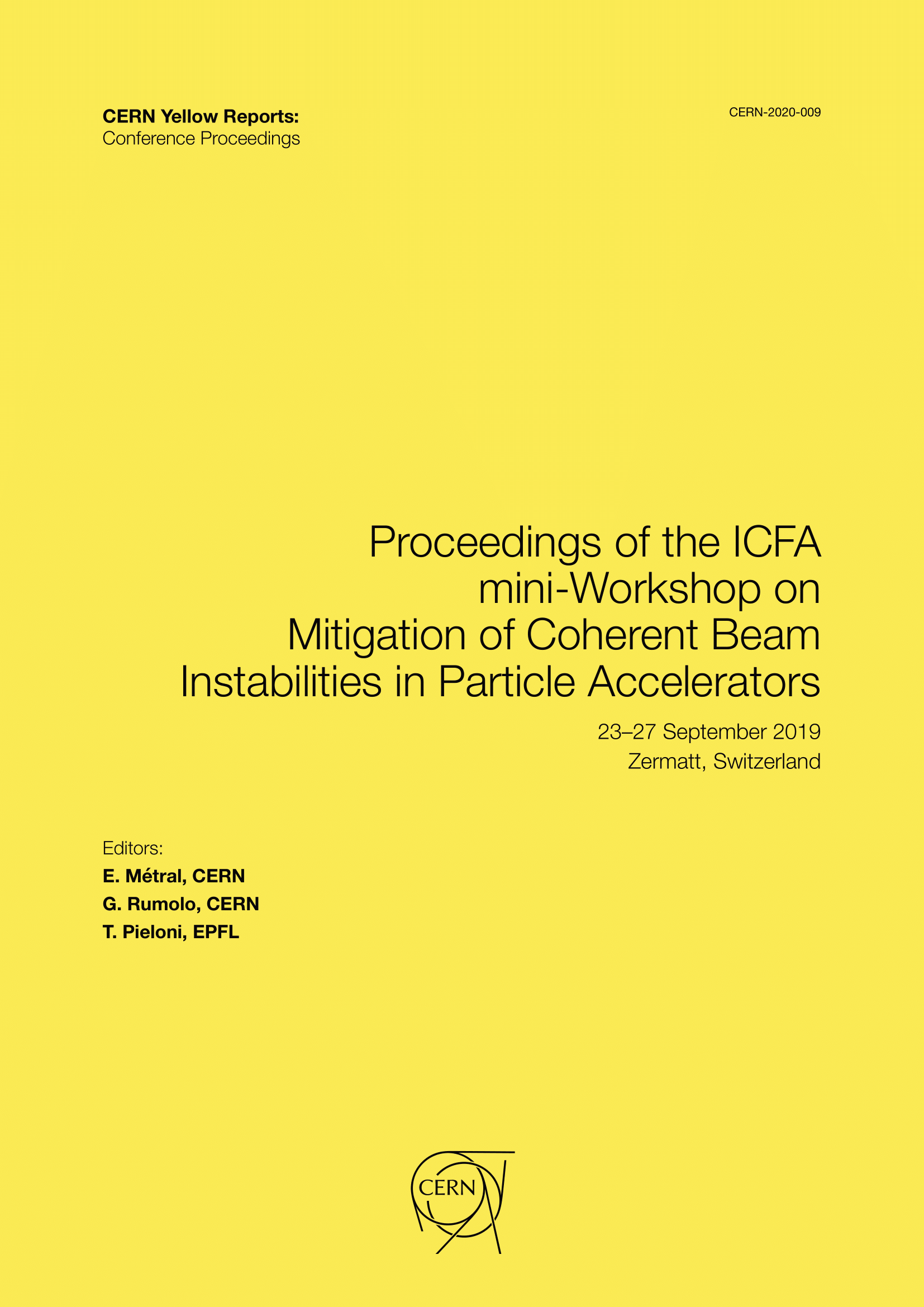Impedance reduction for LHC collimators
DOI:
https://doi.org/10.23732/CYRCP-2020-009.179Abstract
The LHC at CERN is equipped with a sophisticated collimation system, aimed at protecting superconducting magnets against quenches in case of losses from the circulating beams. The collimation system is one of the major contributors to the machine impedance at top energy. A relevant hardware upgrade of the system will take place in the context of the High Luminosity LHC (HL-LHC) project; one of the main objectives is to make stabilisation of the brighter HL-LHC beams reachable within the capabilities of the Landau octupoles. In fact, a relevant fraction of the carbon–based collimators will be exchanged with new ones, the jaws of which are made of materials more optimised in terms of impedance; hence, the footprint of the collimation system will be significantly reduced. The present contribution gives an overview of the baseline low-impedance upgrade of the LHC collimation system as foreseen by the HL-LHC project and the expected impact on impedance. Additional options that could further improve the footprint of the collimation system on the machine impedance are briefly summarised.
Downloads
Published
Issue
Section
License
Copyright (c) 2021 CERN

This work is licensed under a Creative Commons Attribution 4.0 International License.
Authors who publish with this publication agree to the following terms:
- CERN retains copyright and publishes the work licensed under the Creative Commons Attribution License 4.0 that allows others to share the work with an acknowledgement of the work's authorship and initial publication in this series.
- Authors are able to enter into separate, additional contractual arrangements for distribution of the published version of the work (e.g., post it to an institutional repository or publish it in a book), with an acknowledgement of its initial publication in this series.
- Authors are permitted and encouraged to post their work online (e.g., in institutional repositories or on their website) prior to and during the submission process, as it can lead to productive exchanges, as well as earlier and greater citation of published work (See The Effect of Open Access).

